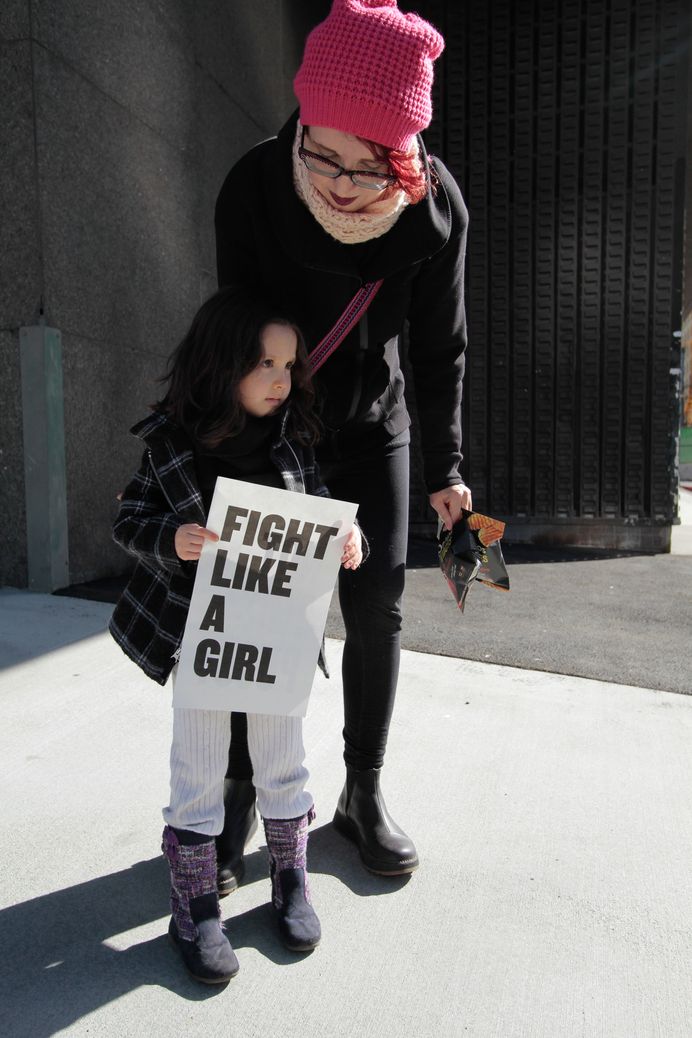If we want to close wealth gaps and invest in startups in markets that will transform the world, we need more diversity in the teams that make investment decisions. Serious diversity will generate more money, which will permeate the startups, the community in which they are, and the region.
In the 21st century, there is a huge gap in a topic that cuts across cultures, societies, and even industries: that of female Venture Capital. According to Crunchbase, a platform that brings together business information on private and public companies originally developed to track startups, in 2020, women-led startups received only 2.3% of venture capital funds. In 2021 the situation was no better as venture capital funding for women-founded companies in the U.S. decreased considerably.
Nevertheless, optimism prevails. A study by Washington-based PitchBook Data reveals that startups founded by women founders have raised more venture capital dollars and executed more equity exits than in the past decade. According to the study, as of September of last year, women-founded startups had raised more than $40 billion, nearly double the amount invested in women-founded companies in 2020 or 2019. Much of the increased investment was concentrated in the technology, healthcare, and retail sectors.
Even with this good news, this level of investment in women represents only 18% of the $239 billion raised by all VC-backed companies. This is evidence that there is still a significant gender gap in the sector, both among those responsible for investing in VC firms and funding recipients.
Currently, nearly three-quarters of U.S. venture capital firms do not have a single woman as an investment partner. Overall, women represent approximately 11% of venture capital firm investment partners. In addition, only about 13% of venture capital funds go to start-ups with a woman on the founding team.
These data are not surprising given that men traditionally dominated venture capital. Perhaps one reason for this is that most venture capital firms are small and with little turnover, so hiring is infrequent, and diversification is time-consuming. Another cause could be the perception that there are no highly qualified women to operate venture capital. However, there is sufficient evidence that there are more women with the necessary background in venture capital.
The reality is that the interpersonal dynamics in the venture capital industry result in a culture that is unwelcoming and inhospitable to women. Men have stereotyped investment and entrepreneurship, resulting in a perceived incongruence between women’s attributes and the requirements to perform these roles. A hypermasculine culture exists in venture capital, symptoms of which may include low psychological security, extreme competitiveness, excessive risk-taking, and a lack of support for women’s working lives.
The result is a significant gender gap in venture capital funding, overwhelmingly dominated by men. According to a recent study by Axios, a news and information website, women make up only 9% of investors in U.S. venture capital firms. Moreover, although female entrepreneurship is growing rapidly, women still do not receive as much venture capital funding as their male counterparts. They receive a disproportionately small share of 2.3% for all-female founding teams and 10% for mixed-gender founding teams.
According to Women Investing, a community of over one hundred professional women active in the Private Equity Industry as angel investors, 84% of funds do not have a single woman on their investment team. Furthermore, only 4% of funds have a female partner. In addition, 82% of the startups funded by the private equity industry do not have a female co-founder on their team. For example, in Mexico, 84% of the funds do not have a single woman on their investment team, and only 4% have a female partner.
Meanwhile, a study published by Women in VC, the largest community of women investors, finds that of all partners in U.S.-based venture capital firms, only 4.9% are women, and less than half (2.4% of the total) are founding partners who control a large proportion of a firm’s investment decisions.
The way venture capital firms are currently structured and run is a significant barrier to gender equality in that industry. Research shows that venture capital firms with 10% more women hired as investment partners make more successful investments at the portfolio company level, earn 1.5% higher returns on funds, and have 9.7% higher profitable exits.
Female founders receive about a quarter of the funding they seek, while their male counterparts receive half, on average. A Boston Consulting Group (BCG) study found that while female-founded companies received approximately half as much investment as male-founded companies, female-founded companies generated twice as much revenue as their male counterparts.
Jessica Peltz Zatulove, venture capitalist and co-founder of Women in VC, says: “In the last five years, the number of funds led by women has nearly quadrupled and continues to accelerate. Career advancement may be limited or take years in VC firms if there is a path to full partner.”
In turn, G2 Momentum Capital, an early-stage VC fund, believes that capital raising should be equitable, that there should be no differences between men and women, but that it should be based on “how good the idea is” or on “whether the rider knows how to lead the horse” from a human being perspective and not on whether he or she is a man or a woman.
The PitchBook report suggests a growing group of female angel investors and general partners at funds actively seeking to support female startup founders. At the end of 2019, 12% of general partners at venture capital firms were women, and there were 740 female angel investors. Today, women represent 15% of general partners in venture capital firms, including about 1,000 female angel investors.
According to the data, the 275 new venture capital funds started and led by women represent a huge opportunity for the entire economy and are poised to invest in 7,000 companies over the next few years, potentially creating more than 80,000 jobs. Ninety percent of women-led funds are considered “emerging” managers, with 73% found in the last five years, 23% raised their first fund, and 44% deployed. These new funds have not invested long enough to establish a track record. They need years for their portfolios to mature, for companies to exit, and for their investors to make a profit.
But there are women role models within the venture capital industry shaping the future for greater female participation. Here are some of them.
Anastasiya Giarletta, principal at R42, invests in and advises the next generation of founders on longevity and artificial intelligence. R42 is a $16 million seed fund led by Dr. Ronjon Nag, focused on AI and longevity companies at the boundaries between biology and computer science. One piece of advice he gives for those who want to enter this entrepreneurial world is, “Have a genuine willingness to help others, continually cultivate your network among founders and investors, and open doors to entrepreneurs and founders who are not part of an established network.”
Bao-Y Van Cong, Chief Investment Officer of Target Global, which invests in early growth-stage European and Israeli companies, with more than $1.5 billion in assets under management, is convinced that the best way to break tech and venture capital space barriers is to seek out allies and experienced operators and investors who are happy and willing to share their expertise.
Dr. Christina Jenkins, a Phoenix Venture Partners’ seed fund partner, writes first checks of between $250,000 and $500,000 to high-tech platform companies that transform the way diseases are diagnosed, monitored, or treated. She also leads Portfolia’s fund investments to support device and digital health companies. She comments, “I am delighted to lead Portfolia’s investments, a venture community made up of over 90% women as limited partners. So far, the first two funds have had the best results in their vintage year.”
Deepali Nangia, Venture Partner at Speedinvest. She is a seasoned angel investor with over a decade of experience in private equity, investment banking, and corporate operating roles. An avid advocate for diversity in tech, she co-founded Alma Angels in 2019. Alma Angels is an angel community in support of women founders who have invested in verticals such as digital health (Okko), women’s health (Juno Bio, Bia. care, Parla), sustainability (Planera, Shellworks), fintech (PensionBee), the future of work (Flown), and more.
Maria Velissaris, a serial entrepreneur and founding partner of SteelSky Ventures, an innovative New York-based venture fund, invests in women’s health technology solutions. Velissaris, passionate about developing a funding pipeline for women founders, is a member of Pipeline Angels and Golden Seeds, an angel investment group that invests in women-led teams.
Maria Salamanca is the Director of Unshackled Ventures, a fund that fills a unique niche in the entrepreneurial ecosystem, funding teams with pre-seed stage immigrant founders. Salamanca joined the fund near its formation in 2015 and, during her time, has been involved in over 50 investments. In 2018, she was the first Latina to be named Forbes 30 Under 30 for venture capital.
Yvonne Bajela is a founding member and director of Impact X Capital, a UK-based venture capital fund founded to invest in companies led by underrepresented female entrepreneurs across Europe. Over the past five years, Yvonne has invested over $250 million in start-ups in Europe, the Middle East, and Africa. Impact X Capital invests predominantly in Seed and Series A stages, and since its launch in 2018, the fund has invested in a wide range of companies, including Marshmallow, R.Grid, and Pace.
Another example of a venture capital firm that empowers women in the cosmetics sector is Swiftarc Capital LLC, interestingly driven by a man, Sid Jawahar, a veteran in the investment and finance business, who wanted to create a venture capital firm with a social purpose.
Inspired by women’s empowerment and racial justice initiatives, such as the Black Lives Matter movement, Jawahar and his co-founders in Austin and Santa Barbara launched Swiftarc Ventures to develop a variety of inclusive funds aimed at closing inequities in the investment world.
One of the focus areas was beauty, where funding gaps are staggering. In fact, according to Jawahar, less than 3% of investments go to women entrepreneurs. “Just Google any well-known beauty company: most of them are run by men,” she says. “It’s a controlled and consolidated male-powered industry.”
Since the Beauty Fund’s inception, Swiftarc has allocated $2.5 million in capital to three women-led companies-Pause Well-Aging, a skincare and wellness line for women in menopause; Thirteen Lune, a cosmetics marketplace of black- and brown-owned companies; and AlleyOop, a Generation Z-native beauty, and body products brand.
These and many other examples demonstrate that it is possible to break male paradigms about venture capital, especially when considering the vast potential of women entrepreneurs for innovation and job creation. Moreover, these examples make it clear that women-led companies tend to attract more investment in their later stages than those led by men. On average revenues usually exceed the market’s, they are more likely to employ other women entrepreneurs.
Beyond the Investment
A report prepared in August 2020 by the European Investment Bank (EIB) reported that among European Union companies supported by venture capital, those led by women are more successful in terms of value and turnover. In addition to having hired more women, this which has contributed to an increase in the financing of companies founded by women or with women in executive positions. According to the EIB, the annual pace of venture capital investment in women-led companies in Europe is already higher than the overall investment growth in the region.
That’s why a smart move by the industry would be to promote gender equality in private equity, as it is an evidence-based way to increase the prosperity of the entire industry. But moving toward gender parity and reaping the full benefits of diversity requires a sea change in attitudes, corporate cultures, and institutions, leading to financial decisions that benefit everyone equally.
Traditionally, efforts to increase gender equality in the private equity industry have focused on addressing interpersonal barriers, raising awareness of unconscious biases, and changing the way individuals interact with each other. While interpersonal barriers such as gender bias, stereotypes, harassment, belief in meritocracy, and male culture remain important, overcoming them requires cultural and organizational solutions rather than interpersonal or individual.
The venture capital industry must address the roots of gender inequality through targeted interventions at the organizational and industry levels. Moving the venture capital industry toward gender balance requires a concerted effort by fund partners and the institutional investors, high net worth individuals, and families who invest in them.
For example, in the United States, the organization All Rise was created, which seeks to bridge the gap by encouraging women to become investors in venture capital funds that invest only in projects led by women. They have also increased networking between female company founders and investment fund executives. In Chile, some organizations such as Mujeres Empresarias are working along these lines and have done a great job, but undoubtedly much more volume is required to create a substantive change in the industry.
Things are changing, but the pace must be accelerated because otherwise, “if we continue at the current pace, it will take 200 years for women fund managers to have the same status as their male counterparts,” according to The GenderSmart community. In addition, if we want to close wealth gaps and invest in startups in markets that will transform the world, we need more diversity in the teams that make investment decisions. Serious diversity will generate more money, which will permeate the startups, the community in which they are, and the region.
The fundamental thing is to create conditions for female entrepreneurship to develop so that the venture capital industry stops being a kind of Toby’s Club.
Suppose, as a woman, you are thinking of opening a startup through venture capital. In that case, it will be important that you have clarity on some concepts related to this type of instrument, and one of the first things you should keep in mind is how venture capital works and the commitments assumed by each of the parties. Next, specify how the financing fund expects to recover its investment and with what profits, and to what extent it can be involved in the management to ensure the venture’s success.
Remember that these funds are experienced and may partner and sit on the board of directors and intervene in decisions, which can add to your company’s credibility within the industry.
Contrary to what you might think, many venture capitalists place as much importance on the strength of the management team as they do on the product or service before determining whether to invest. A very popular product one year may be obsolete the next, but these problems can be overcome with a strong management team. Of course, these managers must have a cool head and be receptive and encouraging to change and growth.
Every venture capitalist is looking for a substantial return on their investment. If the company is in its infancy, the rate of return must be higher to compensate for the risk. The business needs to be positioned for rapid growth in products and management.








